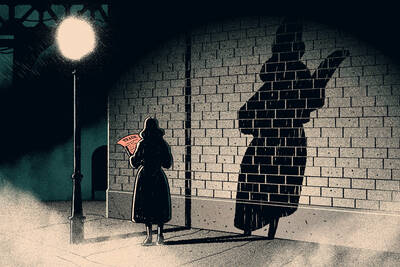Finance & Accounting Strategy Economics Feb 2, 2011
Missing in Aisle 5
When grocery stores borrow, consumer experience drops
In the hours before a dinner party, hosts often experience a sinking feeling when they discover a missing ingredient: parsley, seltzer water, or a baguette. With guests on the way, hosts have just one stab at getting the purchase right, so they choose their shop carefully.
Moments like these matter in a study by David Matsa, an assistant professor of finance at Kellogg School of Management, who assessed inventory issues at grocery stores. These moments can occur regularly, not just before dinner parties but whenever selective or busy people go shopping. He found that stores with heavy debts to pay off tend to cut back on inventory to save money, but such moves can have unintended consequences over time.
“Firms have to make a choice between investing more in the long run or paying off some of their debt obligation today. And many may decide to pay off loans by cutting back on quality,” Matsa explains. “But the cost of a lack of inventory is potentially very different in the short run than in the long run.”
In the short run, losses might not be noticed because losing the sale of Heinz ketchup to a single customer may be overshadowed by what the store saved in inventory cuts. But significant losses are incurred over time if regular customers who did not find their Heinz decide to shop elsewhere rather than risk wasting their time at a store frequently missing what they desire.
“If I go to a store once and they don’t have my brand of peanut butter, it’s annoying,” says Matsa, “but if they are out almost ten percent of the time, then I start thinking about doing my shopping somewhere else.”
When stores borrow a considerable sum of money, they tend to run out of items 8 to 9 percent more often, estimates Matsa in a paper published in the American Economic Journal: Microeconomics. He calculated this number by traveling regularly to Washington, D.C. over the last five years to peruse the database used to calculate the U.S. Consumer Price Index, which tracks the prices of goods. The government sends employees to businesses to record the price of miscellaneous items each month in order to get a sense of how the economy is fairing. From information in the database, Matsa kept track of items gone missing. “When a surveyor goes out to Chicago, they may track the price of Captain Crunch cereal, and then I know it’s in stock,” he explains. Then, by looking at public account filings from grocery stores and a database that tracks highly leveraged transactions from firms, Matsa kept track of grocery store debt financing.
Not Just Grocery Stores
Matsa thinks that the behavior of grocery stores is applicable to other retailers too, suggesting a general link between borrowing money and cutting inventory. Secondly, he finds that the cost of cutting inventory may be higher than either economists or grocery store owners anticipate.
“It’s not just about making a sale, but it’s about having enough inventory so that customers come back in the future.”
For example, in 1986 Safeway took out multiple loans. Within two years they cut their inventory by $75 million. That cut-back saved Safeway $19 million annually but Matsa estimates that it reduced long-run profits by approximately $68 million—more than three times what they saved by cutting inventory.
“It’s not just about making a sale, but it’s about having enough inventory so that customers come back in the future,” Matsa explains. “Even if fewer than 1 in 100,000 customers switch stores, cutting inventory to this extent is unprofitable in the long run.”
What’s more, some call inventory a barometer for how grocery stores perform otherwise. According to Consumer Reports ratings, Matsa says, well-stocked grocery stores tend to be cleaner, have more courteous staff, and faster check-out lines. Although his study did not quantify the effects of leverage or borrowing on these factors, he says they potentially suffer as grocery store owners save money in order to repay debt.
Matsa’s numbers are estimations as a number of variables come into play. “When buying diapers, a customer might stick to a brand,” notes Matsa, “but with mustard it may not matter.” Also, customer pickiness varies. In this sense, senior citizens (who have time) and New Yorkers (who have many options) shop alike—preferring to go elsewhere when their specific item is not available—whereas other types of shoppers more readily excuse deficiencies.
Taking out a large loan might help retail stores, but owners should be aware of other parts of their business that the loan may affect as they try to pay it back. More specifically, owners may want to resist the urge to cut inventory. “How a firm finances operations can have important effects on the operations themselves,” Matsa says. “Borrowing decisions and product decisions are more linked than some people may realize.”
Related Reading Kellogg Insight
Corralling Consumer Choice: Optimizing assortment size based on perceived attractiveness
Matsa, David A. 2011. Running on Empty? Financial Leverage and Product Quality in the Supermarket Industry. American Economic Journal: Microeconomics. 3(1).


